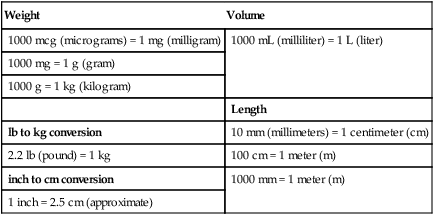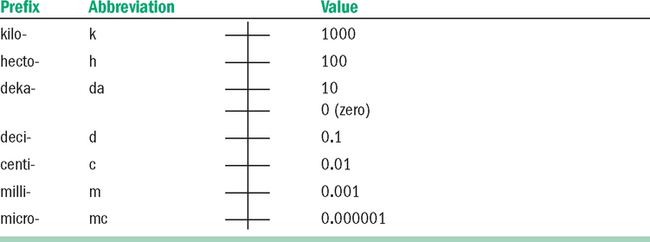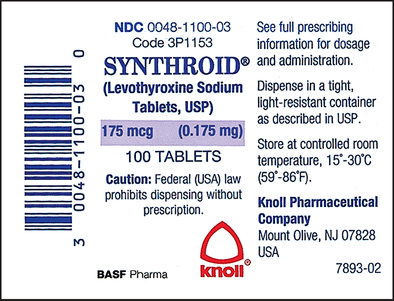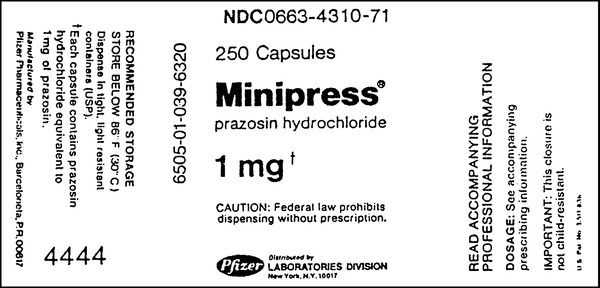• Memorize the units of metric measurement used in medication orders. • State equivalent values of weight (mass) and volume used in metric dose calculations: micrograms, milligrams, grams, kilograms, milliliters, and liters. • Distinguish milligram, milliliter, and milliequivalent. • Define the uses of the term Unit related to measurements and medications. • Calculate basic metric oral medication problems using mental arithmetic and decimal placement. • Verify metric conversions using dimensional analysis. • Use approved abbreviations for metric units. Modern metric measurements have almost completely replaced an old English imprecise Apothecary system* in order to reduce medication errors. The modern metric system is logical, precise, and easy to work with because it’s a standardized decimal measurement system using multiples (powers) of 10 similar to our monetary structure which is also based on a decimal structure. With a little practice and repetition, nurses will be very comfortable with it. 1. What are the three base units of metric measurement used for medications and their abbreviations? _________________________________________________________________________ Four prefixes are commonly used for medication dose calculations: • kilo- (meaning a thousand times) • A fifth prefix, deci- (meaning tenth), is used in laboratory reports. Study Table 3-1, and note the numerical values and relationships. Metric prefixes are combined with bases to create new quantities, as shown in the examples in the table. TABLE 3-1 Metric Measurements, Prefixes, Values, and Meaning 1 mm = 0.001 (one thousandth of a meter). 1 mL = 0.001 (one thousandth of a liter). 1. What are the numerical values of the prefixes m, c, d, and k? _________________________________________________________________________ • For review, write out the five prefixes and three base units used for medication administration. Learn them in preparation for analyzing medication orders. Study the example and note the correct order of writing as follows: Do not write an m to look like a w or a u. Metric abbreviations are case sensitive. Do not close up a c so that cm looks like am. Do use commas to group numbers with more than three consecutive zeros in groups of three from right to left. Do not make up your own metric abbreviations Slashes appear in many drug and laboratory references. The nurse must be able to interpret them. Do not write them. They have been mistaken for the number one (1). The word “per” is to be written out instead of a slash. Refer to the ISMP list of symbols that lead to medication errors on p. 103. 1. Are there 100 or 1000 cm in a meter? ______________________________________________________________________ 2. Are there 100 or 1000 mg in a gram? ______________________________________________________________________ 3. Are there 10 or 100 dL in a liter? ______________________________________________________________________ 1. The average American consumes about 5 g of sodium per day. Intake should be restricted to about 2 g of sodium from all sources. 1 tsp of table salt (NaCl) contains 2300 mg of sodium. Approximately how many grams of sodium do you consume on an average day? ____________________________________________________________________________
Measurement Units and Conversions for Medications
Introduction
Weight
Volume
1000 mcg (micrograms) = 1 mg (milligram)
1000 mL (milliliter) = 1 L (liter)
1000 mg = 1 g (gram)
1000 g = 1 kg (kilogram)
Length
lb to kg conversion
10 mm (millimeters) = 1 centimeter (cm)
2.2 lb (pound) = 1 kg
100 cm = 1 meter (m)
inch to cm conversion
1000 mm = 1 meter (m)
1 inch = 2.5 cm (approximate)

Metric Measurements: Base Units
Dimension
Metric Base Unit
Approximate English System Equivalent
Weight (or mass)
gram (g)
About  ounce dry weight
ounce dry weight
Volume
liter (L)
About 4 measuring cups, a little more than a quart
Length
meter (m)
About 39 inches, a little more than a yard

Metric Prefixes and Values
Prefix
Multiplier
Exponential Power of 10
Meaning
Examples
Meaning
micro (mc)
.000001
10−6
millionth part of
microgram (mcg)
one millionth of a gram
milli (m)
.001
10−3
thousandth part of
milliliter (mL)
one thousandth of a liter
milligram (mg)
one thousandth of a gram
centi (c)
.01
10−2
hundredth part of
centimeter (cm)
one hundredth of a meter
deci- (d)
.1
1 0−1
tenth part of
deciliter (dL)
one tenth of a liter
kilo- (k)
1000
10−3
1000 times
kilogram (kg)
one thousand grams

Prefixes and Abbreviations
Base Units and Abbreviations

![]() The abbreviation for the prefix micro (mc) is preferred over the Greek letter mu (μ) in handwritten patient medical records. A handwritten μg (microgram) can be mistaken for mg (milligram).
The abbreviation for the prefix micro (mc) is preferred over the Greek letter mu (μ) in handwritten patient medical records. A handwritten μg (microgram) can be mistaken for mg (milligram).
Metric Notation
Writing metric unit combinations and equivalents
Guide to Metric Notation
Examples
Abbreviations are always used when accompanied by a number. The number, followed by a space, precedes the abbreviation.
10 mg, 2 g, 5 L
Metric terms are written out when unaccompanied by a number, as illustrated in the following sentence: “Write out grams and milligrams.”
When the number of units following the slash meaning per is 1, the number 1 may be omitted from the abbreviation. It is implied.
40 mg/ g (40 mg per 1 g)
Metric abbreviations are always singular. They are not pluralized.
Milligrams is abbreviated mg.
Liters is abbreviated L.
Write mg, not mgs; g, not gs; and L, not Ls.
There is no period after metric abbreviations except when they fall at the end of a sentence.
Give 2 mg, not 3 mg.
He drank 2 L of water, followed by 1 L.

Measurement Units and Conversions for Medications
Get Clinical Tree app for offline access











